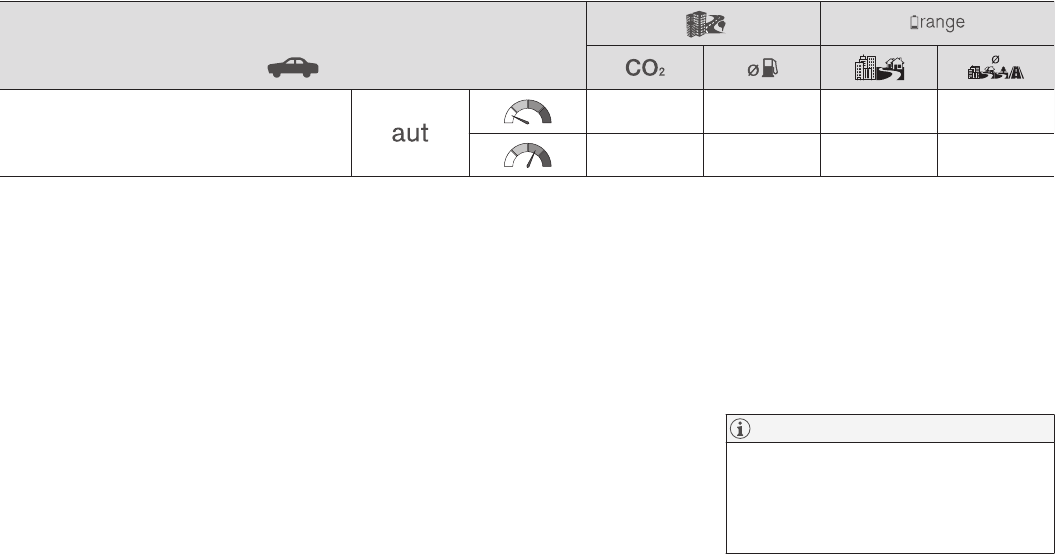SPECIFICATIONS
}}
683
T8 Twin Engine (B4204T34)
40 1.7
57
A
57
A
57 2.5
48
A
47
A
A
Drive mode PURE
The values in the table above for fuel con-
sumption, CO
2
emissions, and range for elec-
tric mode are based on special drive cycles
(see below). The car's weight may increase
depending on its equipment level. Together
with how heavily the car is loaded, this affects
fuel consumption and CO
2
emissions, and
reduces its range in electric mode. According
to WLTP, each car has unique fuel consump-
tion, CO
2
emission values and electric range
values, depending on how the car is equipped.
These values range between the low value and
high value in the table above. In many mar-
kets, you can find your car's unique fuel con-
sumption, CO
2
emission values and electric
range values in the car's registration docu-
ment.
The certified values for the car should not be
interpreted as the expected values. The certifi-
cation values are the comparative values
obtained during special drive cycles (see
below).
There are several reasons for fuel consumption
that is higher and an electric range that is
shorter than the values in the table. Examples
of these include:
•
If the car is not regularly charged from the
mains.
•
If the car is equipped with extra equip-
ment that affects its weight.
•
Driving style.
•
If the customer chooses wheels other than
those mounted as standard on the basic
version of the model, this could increase
rolling resistance.
•
High speed causes increased air resis-
tance.
•
Fuel quality, road and traffic conditions,
weather and the condition of the car.
A combination of the examples above could
increase consumption considerably.
There may be huge deviations in fuel con-
sumption if comparing to the drive cycle pro-
files (see below), which are used in the certifi-
cation of the car and on which consumption
figures in the table are based. For further infor-
mation, please refer to the referenced regula-
tions.
NOTE
Extreme weather conditions, driving with a
trailer or driving at high altitudes, in combi-
nation with poorer fuel quality than recom-
mended, are factors that considerably
increase the car's fuel consumption.
WLTP standard
From and including 1 September 2018, a new
standard was introduced for calculating con-

